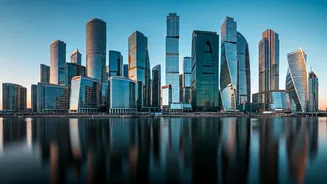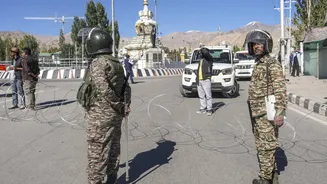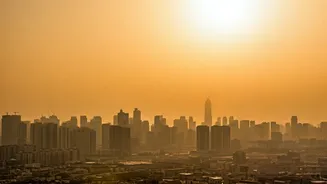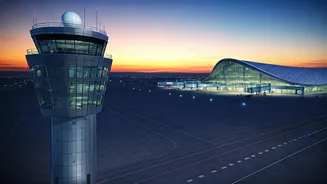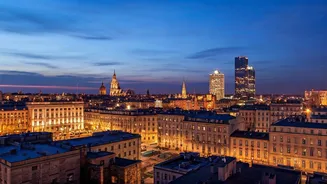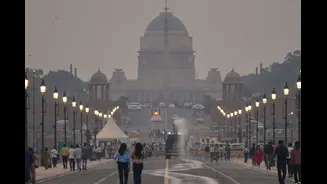The 'Airpocalypse' Unveiled
India is currently grappling with what is being called an 'Airpocalypse,' a term that encapsulates the severity of the air quality issue. This description
comes from the alarming rise in toxic smog, particularly in urban areas like Delhi. The root of the problem lies in a mix of factors, including vehicular emissions, industrial pollutants, and seasonal burning of crops. This mix creates a cocktail of harmful substances that significantly degrade air quality, surpassing safe exposure limits as defined by health organizations. The health implications are severe, with a direct correlation between this exposure and the increasing rates of cancer and heart attacks among the population. The term 'Airpocalypse' is a fitting label, underscoring the urgency and the potential catastrophic health consequences of this critical environmental issue.
Toxic Smog's Health Toll
The detrimental effects of the 'Airpocalypse' on human health are substantial. Continuous exposure to polluted air heightens the risks of respiratory illnesses, and, more seriously, increases the likelihood of developing cancer and experiencing heart attacks. Medical studies have established a direct link between the concentration of particulate matter and other pollutants in the air and the increased incidence of these critical health conditions. Delhi's situation serves as a prime example, where consistently poor air quality leads to escalating numbers of hospital admissions related to respiratory problems, along with a documented increase in the occurrence of cardiovascular diseases. The health costs associated with treating these ailments put a heavy burden on individuals and the healthcare system, exacerbating the problem as the smog continues to spread.
Causes: A Complex Web
Multiple factors contribute to the deteriorating air quality in India, forming a complex web of causes. Vehicular emissions from the enormous number of vehicles on the road are a primary source of pollutants, with older vehicles often emitting significantly more harmful substances than newer, more efficient models. Industrial activities and factories, especially in urban and industrial zones, release large quantities of pollutants into the atmosphere. Seasonal burning of agricultural residue, or stubble burning, mainly in the states surrounding Delhi, also contributes significantly to the air pollution. This practice, intended to clear fields quickly, generates massive plumes of smoke that travel long distances, significantly impacting air quality. Additional factors, such as construction activities and geographic and meteorological conditions, amplify the effects, creating a persistent cycle of poor air quality.
Addressing the Crisis
Tackling the air pollution crisis requires a multi-pronged strategy involving various sectors and policies. Initiatives that promote cleaner transportation options, such as electric vehicles and public transit, are essential to reduce vehicle emissions. Stricter regulations on industrial emissions and enforcement of these rules are needed to control pollution from factories. Implementing effective measures to manage agricultural waste, which could include the use of technologies to manage or convert the stubble, would also prove helpful in reducing the extent of seasonal burning. Furthermore, urban planning and the development of green spaces in cities can mitigate pollution levels. Public awareness campaigns that educate people on the dangers of air pollution and promote behavior changes can also play a major role, improving overall air quality. Achieving lasting improvements will call for ongoing collaboration between government bodies, industry, and the public.


